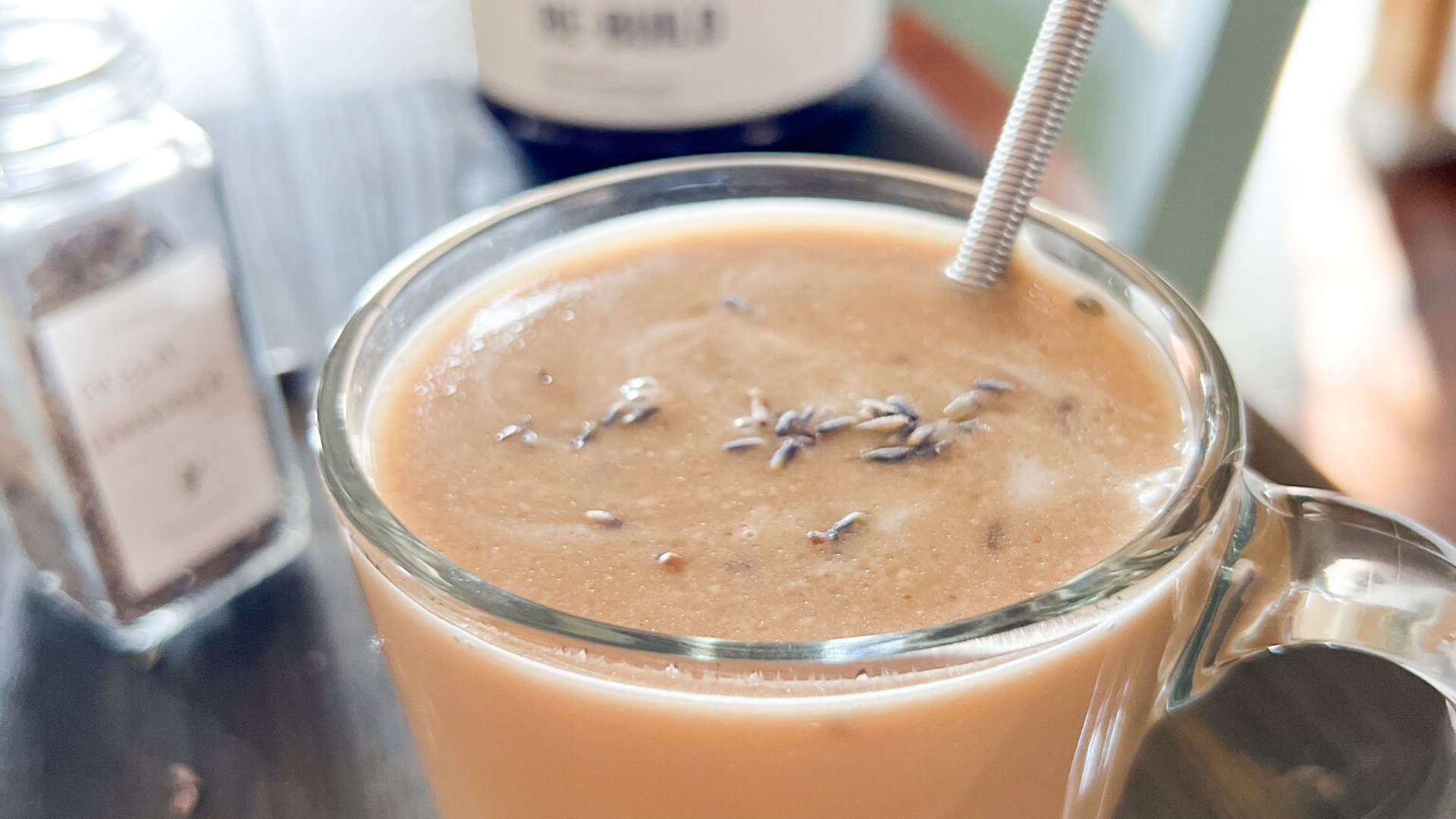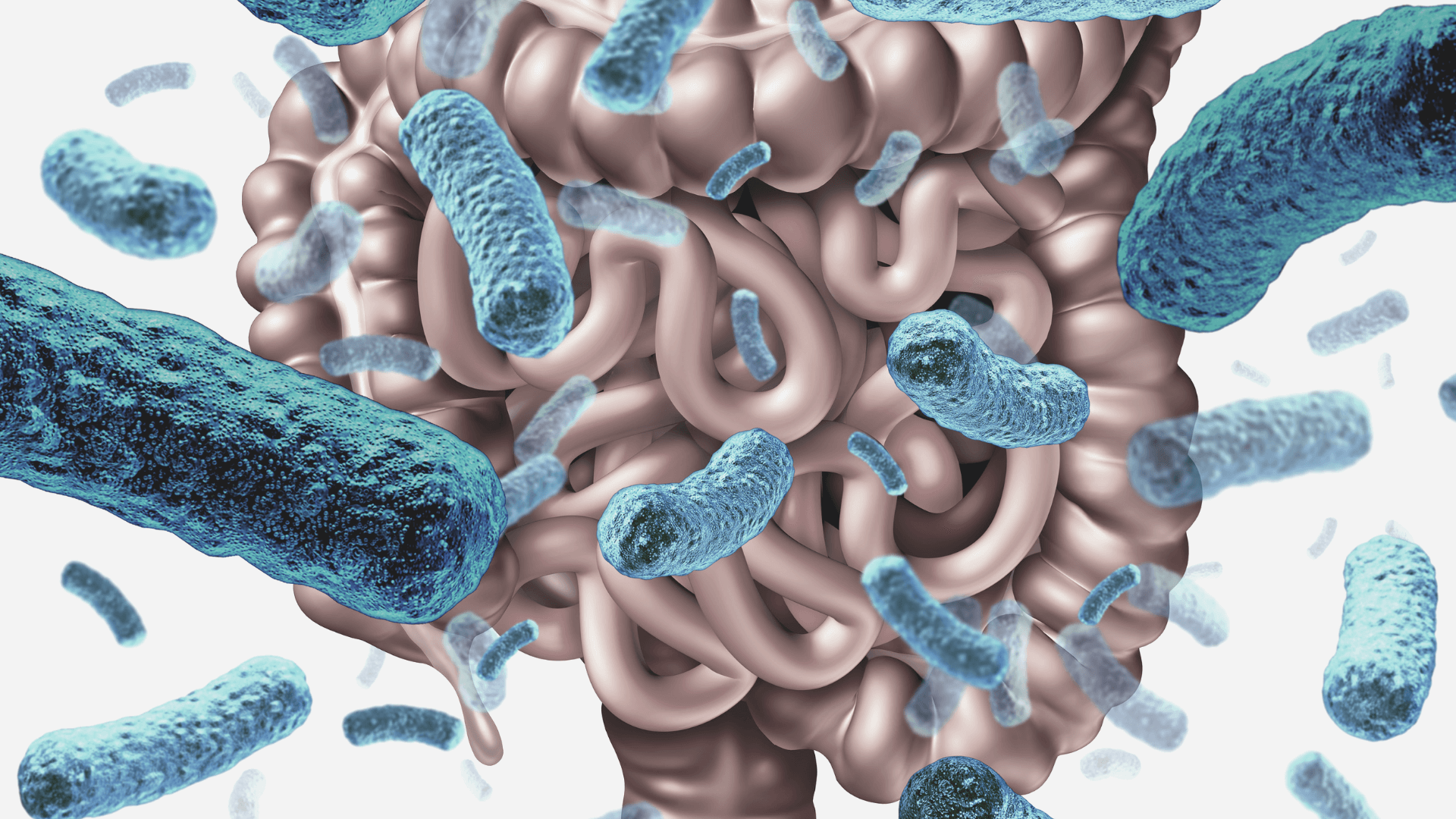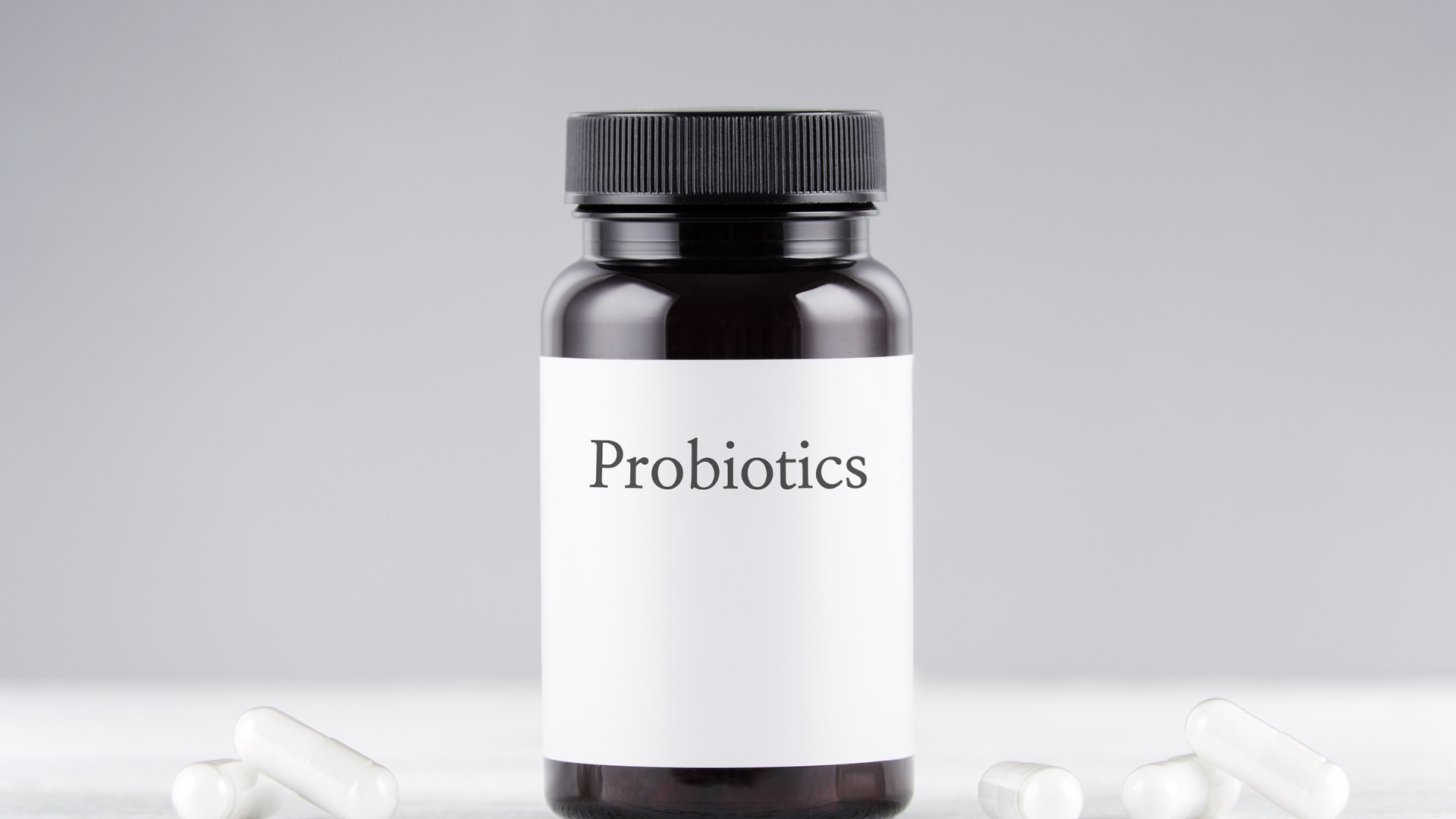Empowering you today to create your own FODMAP diet plan using any combination of the 310 graphics I put together.
That’s right….310 FODMAP graphics are available to you for download now!
Get them all by clicking HERE.
But first, let’s chat about how to create your own FODMAP diet plan.
Create Your Own FODMAP Diet Plan
Click HERE to save this post on how to create your own FODMAP diet plan for later.
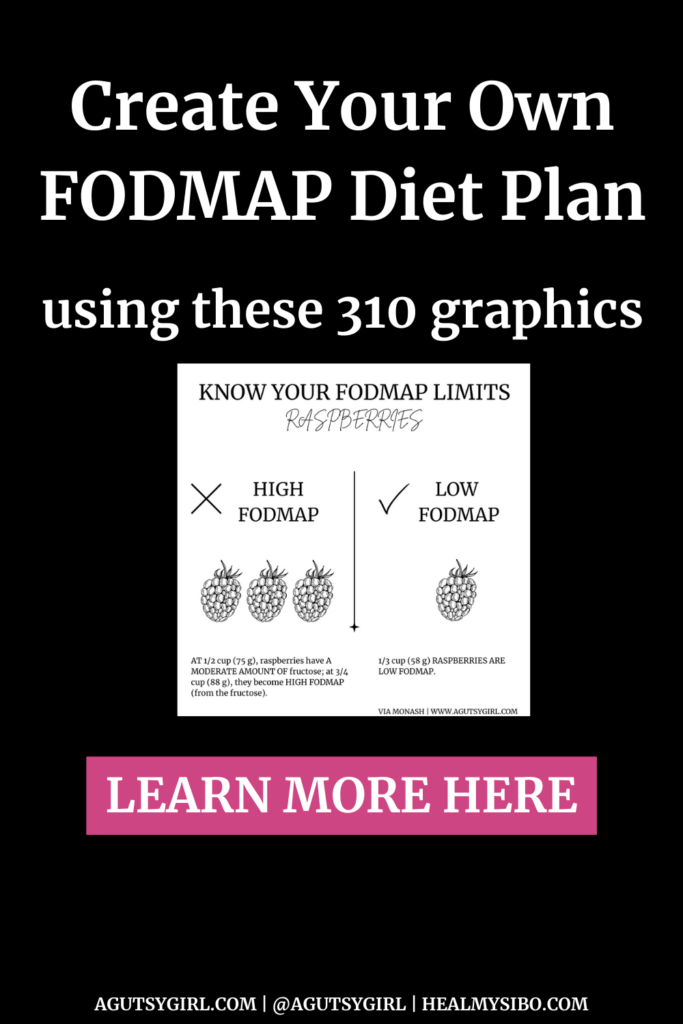
Right now you are thinking,
WHAT? You’re crazy. I can’t possibly create my own FODMAP diet plan. I’m too complicated, and it’s too complicated. And I need help. Just give me the diet template.
I’m going to challenge you here for a minute.
If you are experiencing digestive health issues and uncomfortable symptoms then you can create your own.
But here’s something you must know: and the FODMAP diet “template” and eating plan will not work for you (or anyone else).
I’ve said it before and I’ll say it again…..
All the diets, plans, and protocols will be meaningless until you understand how they apply to you, as an individual.
There are 26 gut healing diets featured in “What is the Best Gut Healing Diet?”
Number 14 on that list is the low-FODMAP diet.
So yes, yes it can be the templated diet you choose for your gut healing journey if it make sense for you.
What is the FODMAP Diet Plan?
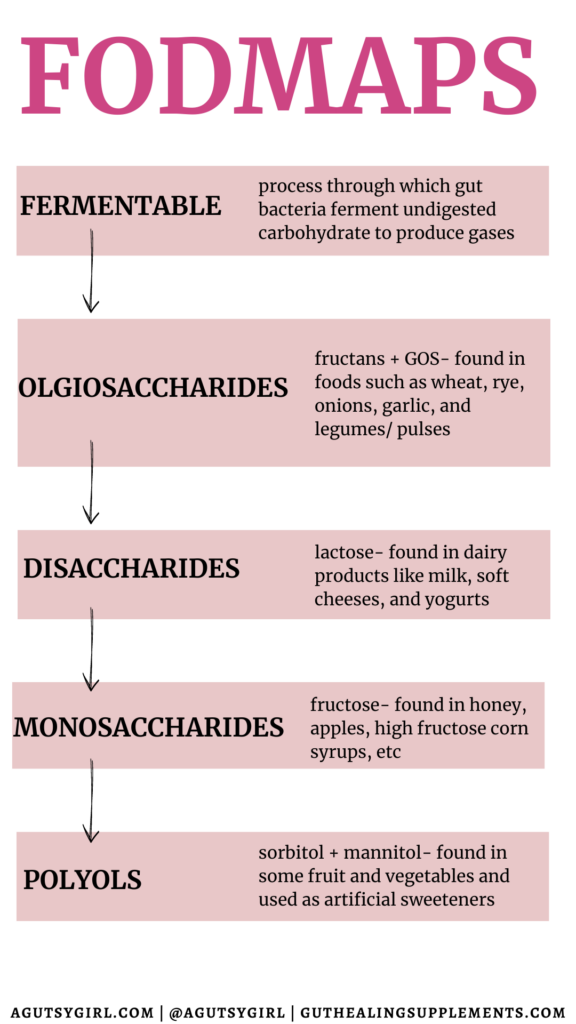
First, what is the FODMAP diet plan?
The low-FODMAP diet is paying attention to the classification of foods known as FODMAPs.
FODMAP stands for Fermentable Oligosaccharides, Disaccharides, Monosaccharides, and Polyols, which are short chain carbohydrates and sugar alcohols that are poorly absorbed by the body.
If and when they are poorly absorbed, you may experience GI symptoms such as abdominal pain, bloating, gas, and/or diarrhea.
And one thing is certain about experiencing those uncomfortable gastrointestinal symptoms: the quality of life is not optimal.
Following the FODMAP diet plan means that in some way, shape, or form you eliminate and/or limit the amount (or type) of high FODMAP foods.
And of course there is a standard, FODMAP diet template floating around out there, even a low FODMAP meal plan.
This is the one you’ve seen time and time again says, “Eliminate any and all high-FODMAP foods.”
But this might not work for you because either:
- It’s too restrictive and you can’t even stick with it for one day, or
- You don’t actually need to follow these intense dietary restrictions.
So then how can you create your own version of the FODMAP diet?
The good news is that I have mastered this, and can teach you.
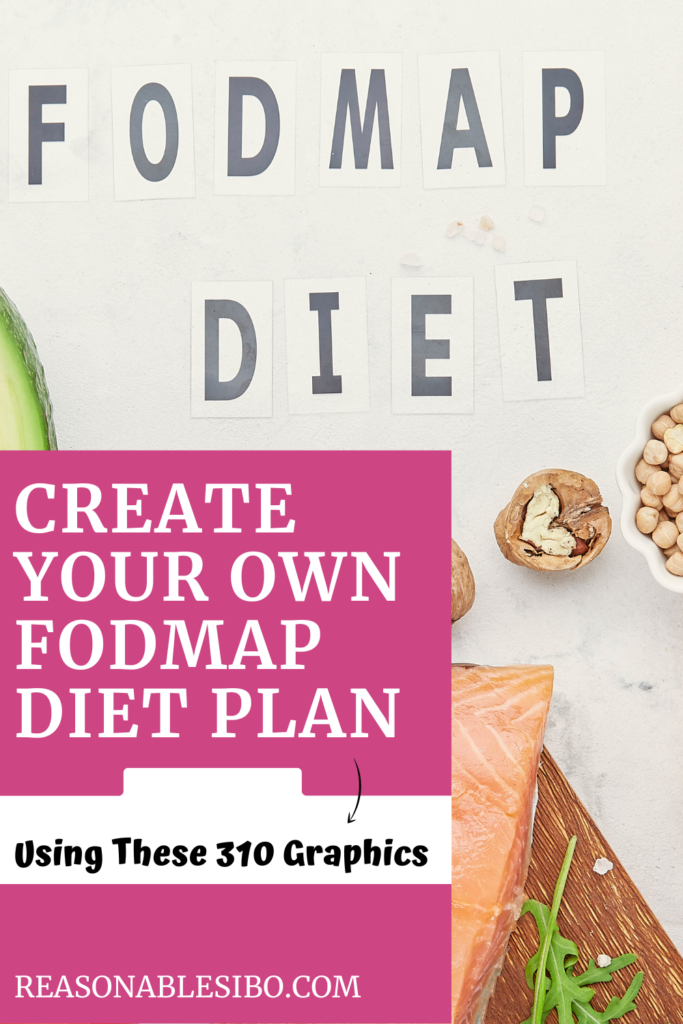
Top 3 Tips for Creating Your Own FODMAP Diet Plan
Now remember, I am healed from SIBO (small intestinal bacterial overgrowth). And the FODMAP diet plan was originally intended for those with small intestine bacterial overgrowth.
Therefore, everything I share is from both a researched and practical standpoint.
So, let’s start with these 3 tips:
- If you have been diagnosed with SIBO and you’re absolutely miserable (but not yet taking any antibiotics), I think it’s okay to refrain from any and all high-FODMAP foods for an “elimination period” (2-4/6 weeks, depending on severity). Treat this as a short-term elimination diet.
- But if you have been diagnosed and your doctor has you starting on antibiotics, consider eating FODMAPs (to comfort) while on the antibiotics.
- If you have not yet been diagnosed with SIBO, but highly suspect it (in conjunction with your healthcare provider), consider playing with “what you can get by with” from a FODMAP standpoint. Best way to do this, in my opinion, is to get the FoodMarble AIRE along with the FODMAP Challenge Program packets and experiment. (Remember, if you want to try the device, use my code GUTSYG at checkout HERE to save 15%. To learn all about the device click HERE.)
- Finally, if you have not yet been diagnosed with anything, but you have gut symptoms relating to Irritable Bowel Syndrome, see number 2 and apply as necessary.
Whether or not you choose all or nothing from a FODMAP consumption standpoint is completely up to you.
Personally, I’d rather find my own happy-medium and then keep track of how my body is responding, readjust and go from there.
And this is how you can create your own FODMAP diet.
Step 1: Track It
Before you even start that low FODMAP diet plan, make sure you have a way of tracking it.
I’m going to nail this point in until my last breath because I could have saved myself years of “investigating” if I would have just focused on the important things by using the right journal.
You’ll NEVER know what is working and/or what is causing all of your GI issues by “winging it.”
Believe me. I tried for a decade to believe I could.
And yes, shameless plug, but my journal, THIS JOURNAL, is exactly what you need.
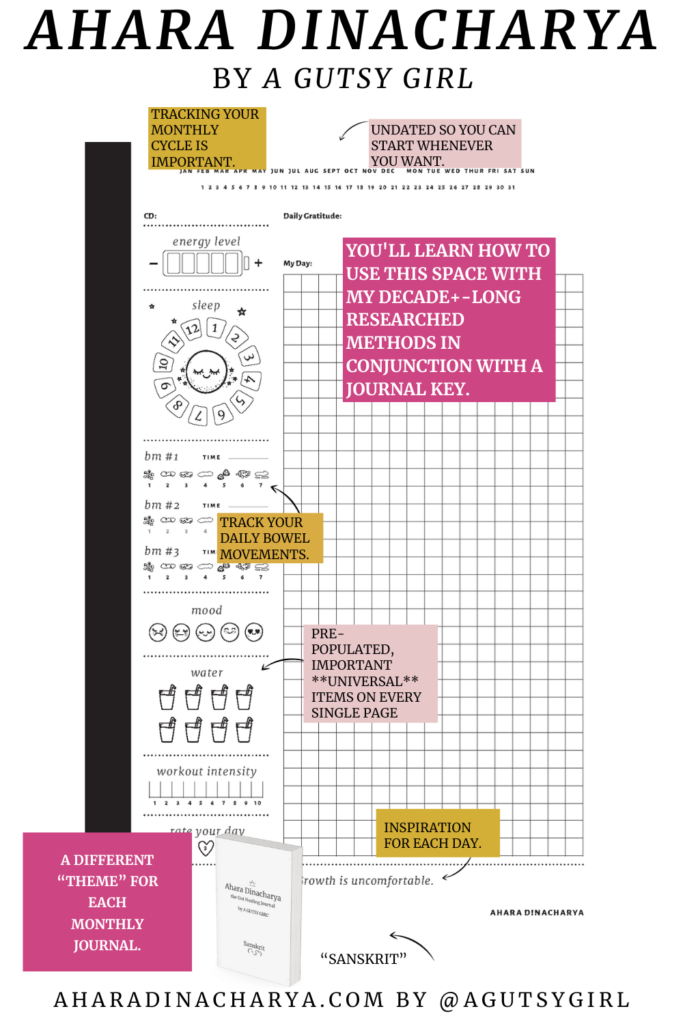
The physical version (HERE) is best because it is done, complete, printed, and will be shipped directly to you (ready to use).
But the e-version still has everything you need.
You can get started today by clicking HERE, purchasing and downloading the files.
Okay, now that we’re all clear on that, let’s keep moving ahead.
Step 2: Decide on One Thing
Alright, now I realize this step is going to be very hard for you. It was for me, too.
You see, we start a “new diet,” and when it “doesn’t work” after 3 days we give up, then move onto the next thing.
I can promise you, though, that the diet you’re doing for 3 days is not the thing that is or is not working.
It’s either:
- other lifestyle factors, making lifestyle changes that you’re not even considering yet
- a templated diet that was never yours to begin with
I’m not here to talk about lifestyle today. I discuss this 24/7 in other places on my website and online (because it’s a huge passion for gut healing).
I’m here to talk about the diet portion.
So, let me be very clear.
There is no templated diet that is yours. That’s just the story massive diet creators want you to believe because they sell product(s) based off that superior diet story.
However, that is not to say that 90% of any given diet or food plan won’t work for you. It most likely will.
It’s just that 10% of any given diet will not work for you as-is.
And when it doesn’t, we give up.
The cycle of diet -> not healing continues which only leads to more digestive distress in the end.
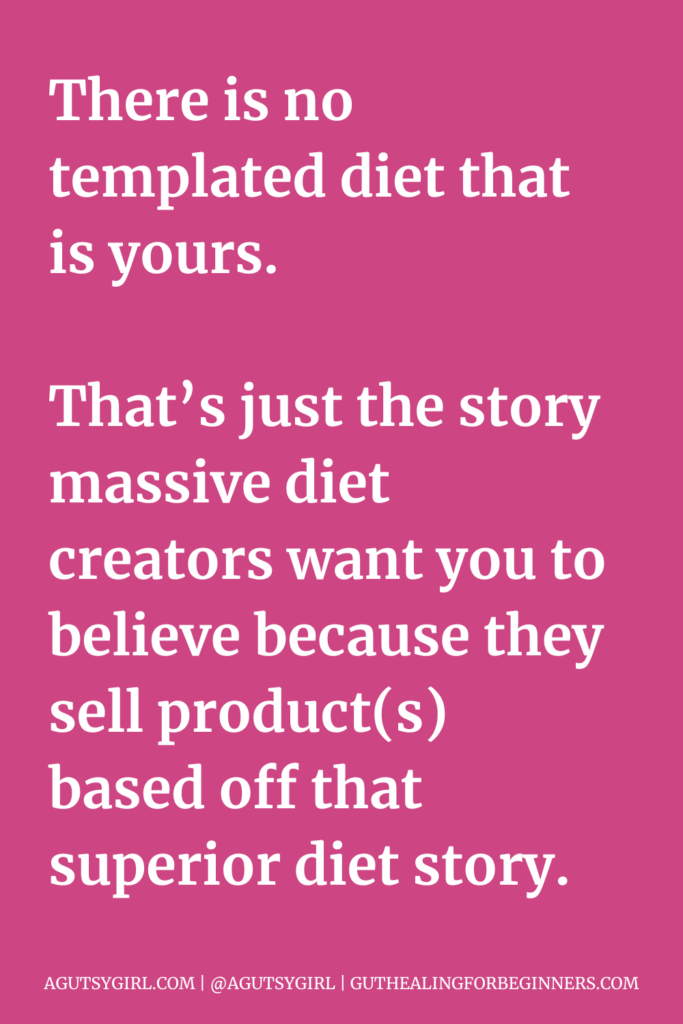
Since this article is about the FODMAP diet, what I mean is that you should decide to follow your version of the FODMAP diet for XX number of weeks.
Don’t make the time period too short or too long. Make it manageable. And don’t give up. Keep track in journal, relentlessly, what is and is not working.
Now, here’s where it gets good and interesting (and real)!
The FODMAP diet that is yours does not inherently mean no FODMAP food anywhere at any time in any way, shape, or form.
Which brings me to step 3.
Step 3: Implement Reasonably
When I initially followed the FODMAP diet, what I got wrong was assuming that I could never, no matter what have a FODMAP, not even in small amounts.
So, instead of having 1/4 cup of blueberries (because that is low-FODMAP), I’d have none.
NOTE: back then, according to the Monash University app (which is a great resource for the FODMAP diet by the way), these were the acceptable amounts on a low FODMAP food list. Today, they are now saying that blueberries are always low FODMAP (or at least up to 500g, which is a lot).
And I was so frustrated. I know you know what I’m talking about when it comes to following a low-FODMAP foods list.
Do not do this.
Instead, start your FODMAP diet by implementing it reasonably.
This means that, whenever possible, you have some (aka the allotted amount) vs none.
Eat them without stress, enjoy, and then record in your journal if and when a reaction occurs.
It most likely won’t, but if it did, one thing you might hypothesize is that fructans (what blueberries contain at huge quantities) could be an issue for you.
Note anything and everything in your journal.
The “fructan” hypothesis may or may not prove to be true. You’d have to do more testing with other fructan-containing foods.
It’s the only way to do a true controlled study.
Let’s look at this with another fruit example: blackberries.
Up to 1 blackberry (4g) is low FODMAP.
At 7g, or 1 medium, blackberries have a moderate amount of sorbitol; at 2/3 cup (160g) they become high FODMAP due to the sorbitol.
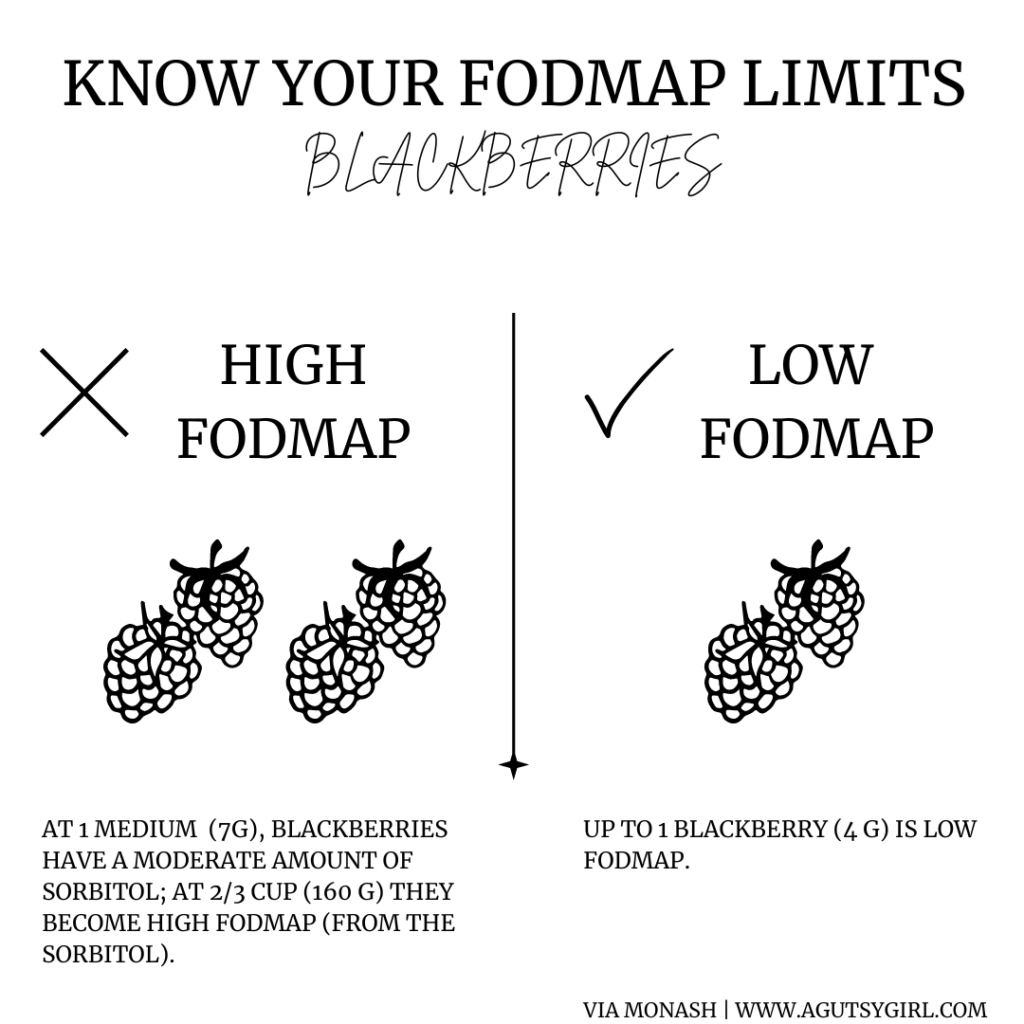
So again, if you have that 1 medium and notice a reaction, you might conclude that sorbitol is your issue.
And what this means is that MAYBE not all FODMAP-containing foods are causing your reactions. MAYBE it’s just sorbitol.
You’ll only know by trying the various class of carbohydrates.
And wait, there’s more – in step 4 – which coincides with this step 3.
Step 4: Implement Reasonably by Making a List Filled with Variety
Another shameless plug, but my e-book, Reasonable SIBO has 310 – YES, you read that correctly – 310 graphics just like the blackberry one from above.
Use the book by grabbing it HERE and make your list of foods to comprise your diet for the next xx weeks.
And remember, because we are shooting for eating more not less, variety is your friend.
FODMAP Diet PDF
I’ll help you start with 11 graphics you’ll find in the e-book.
(Remember, there are 310 of these via PDF download.)

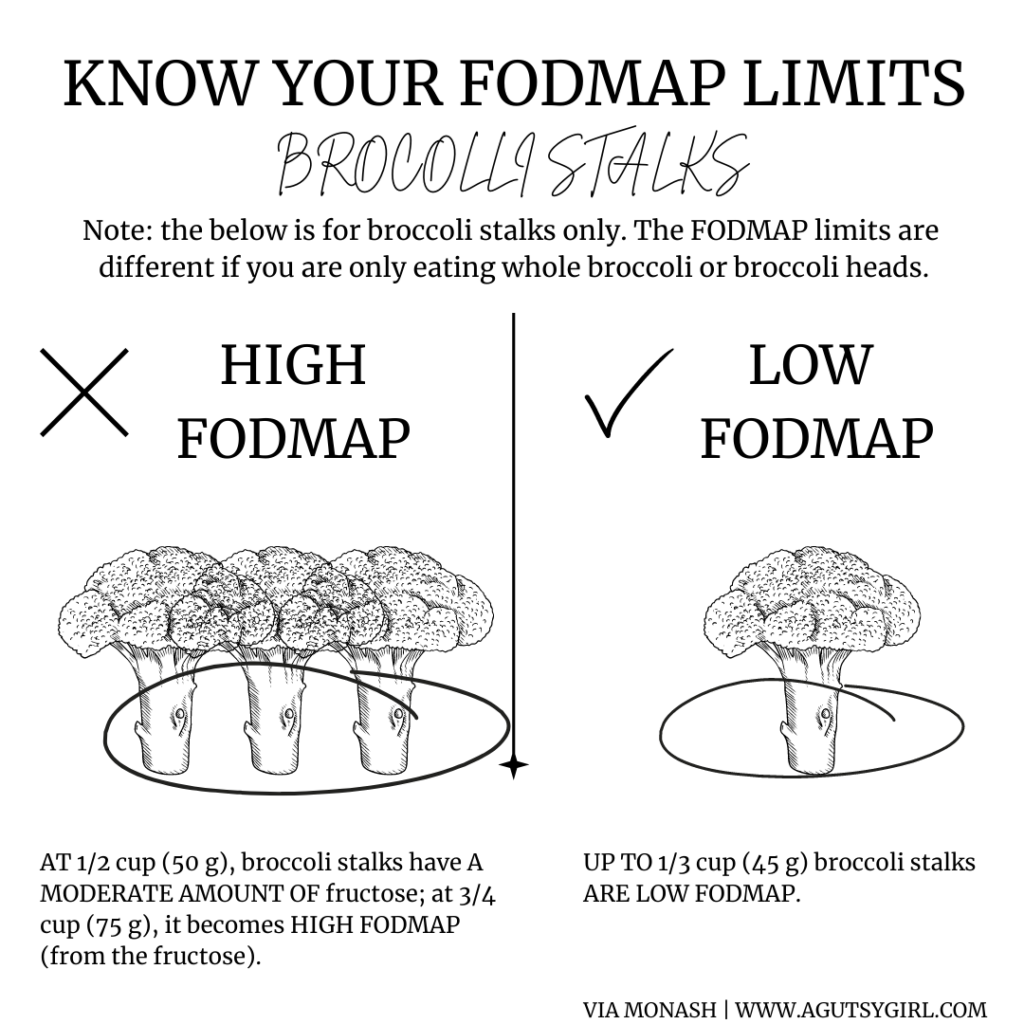
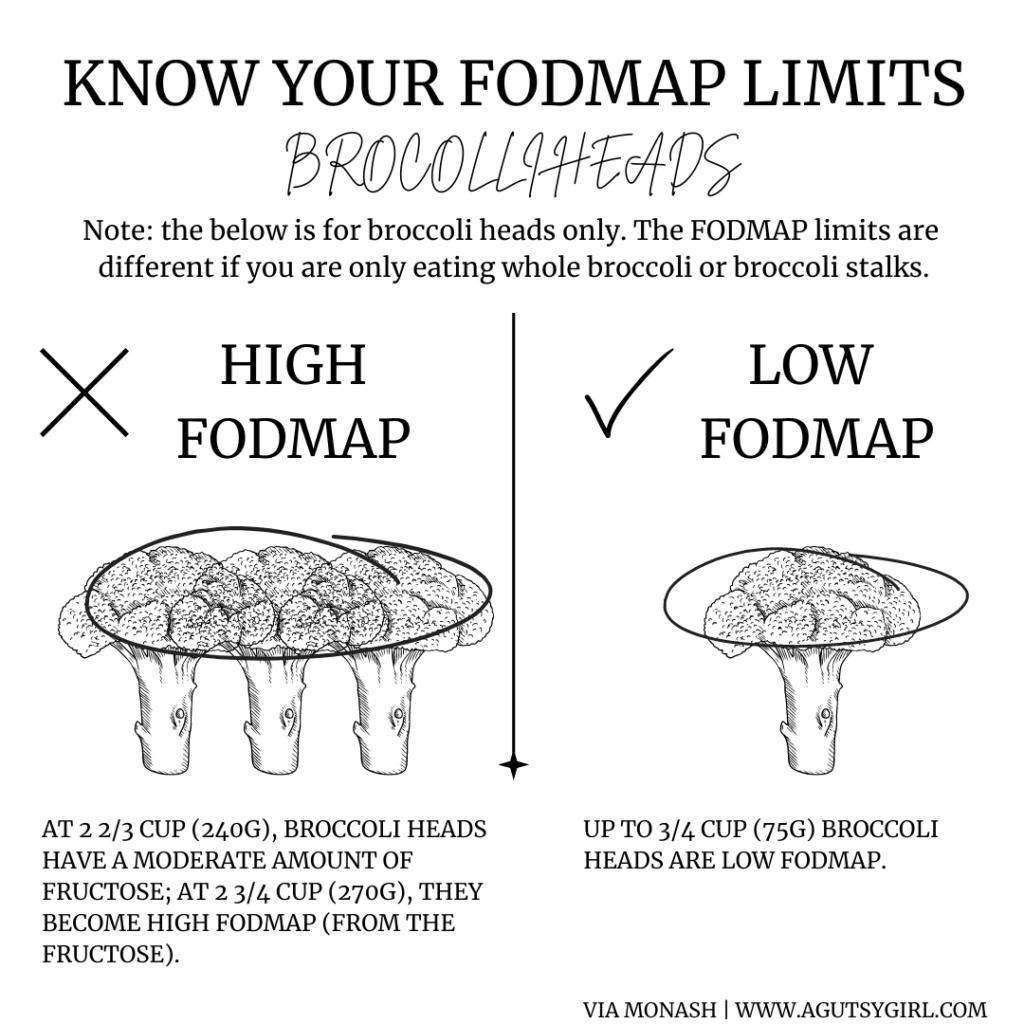
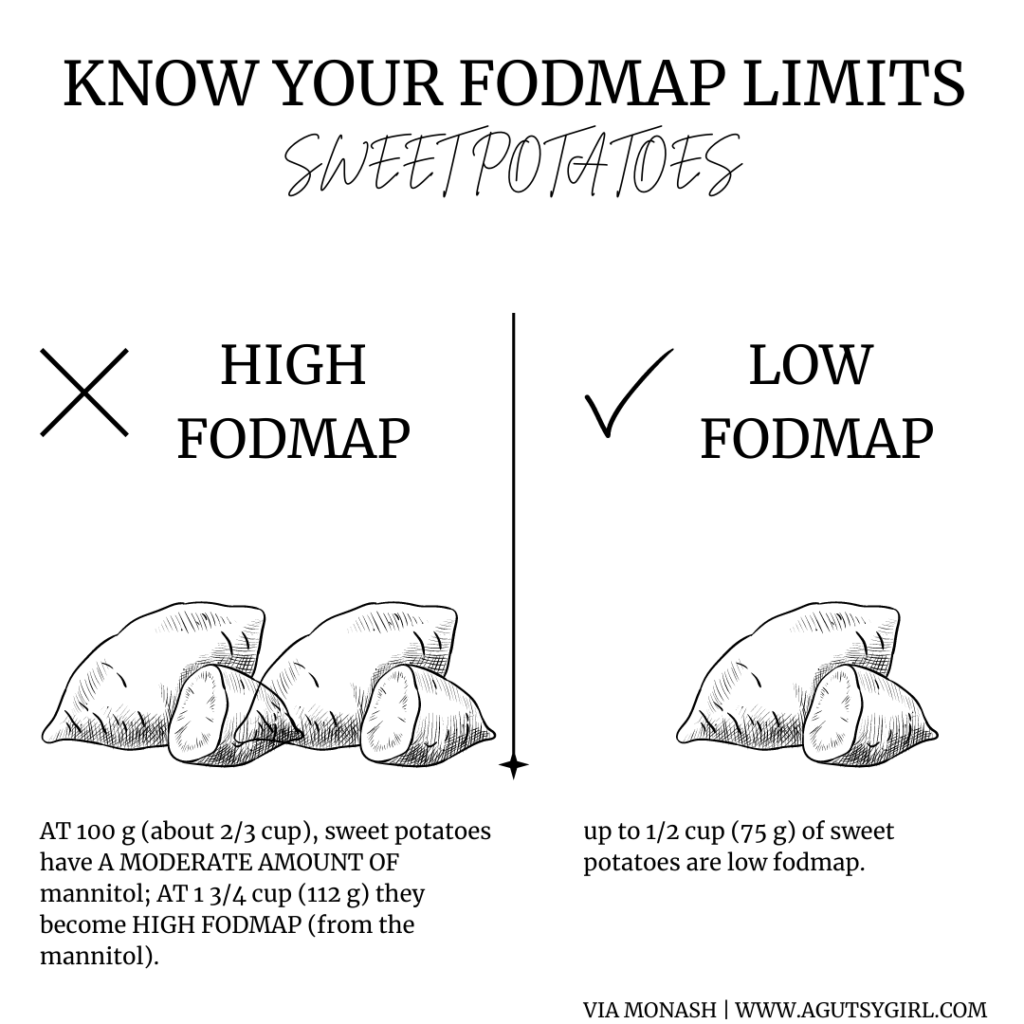
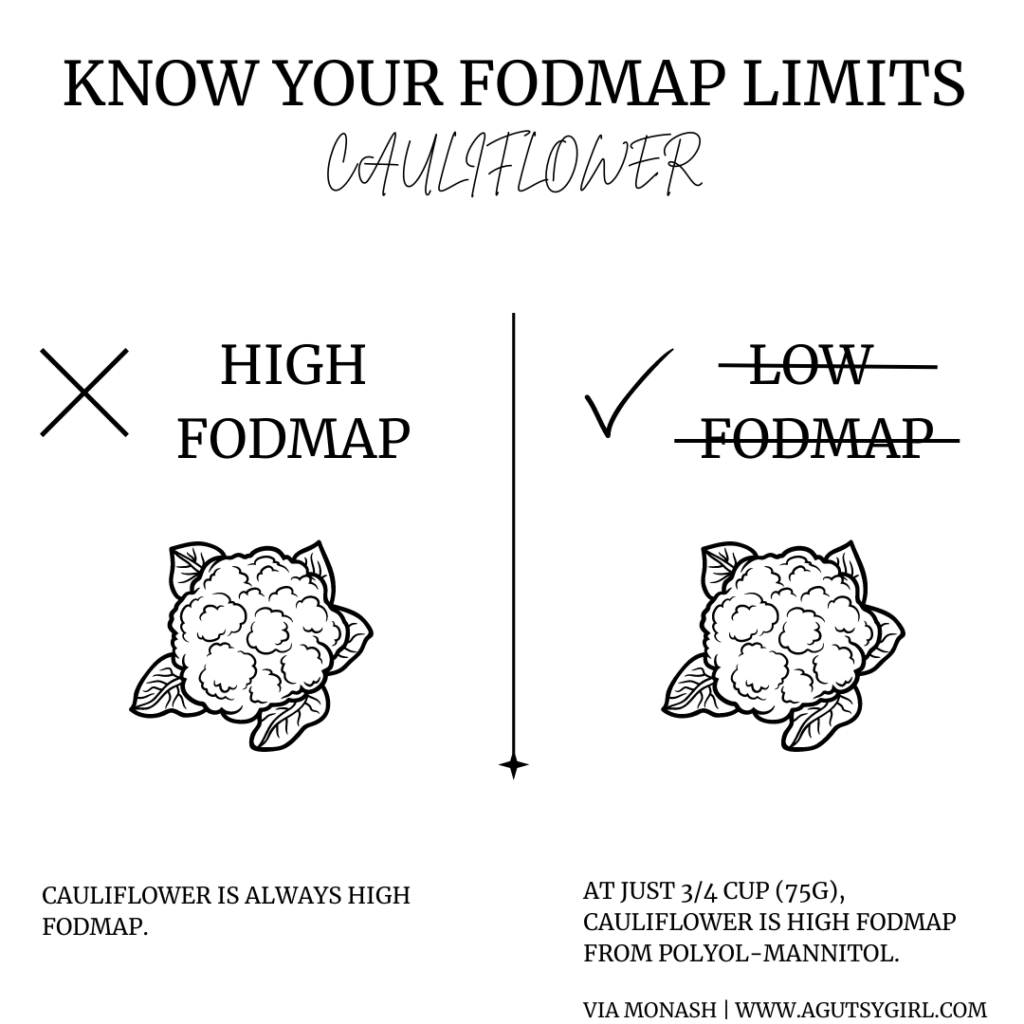
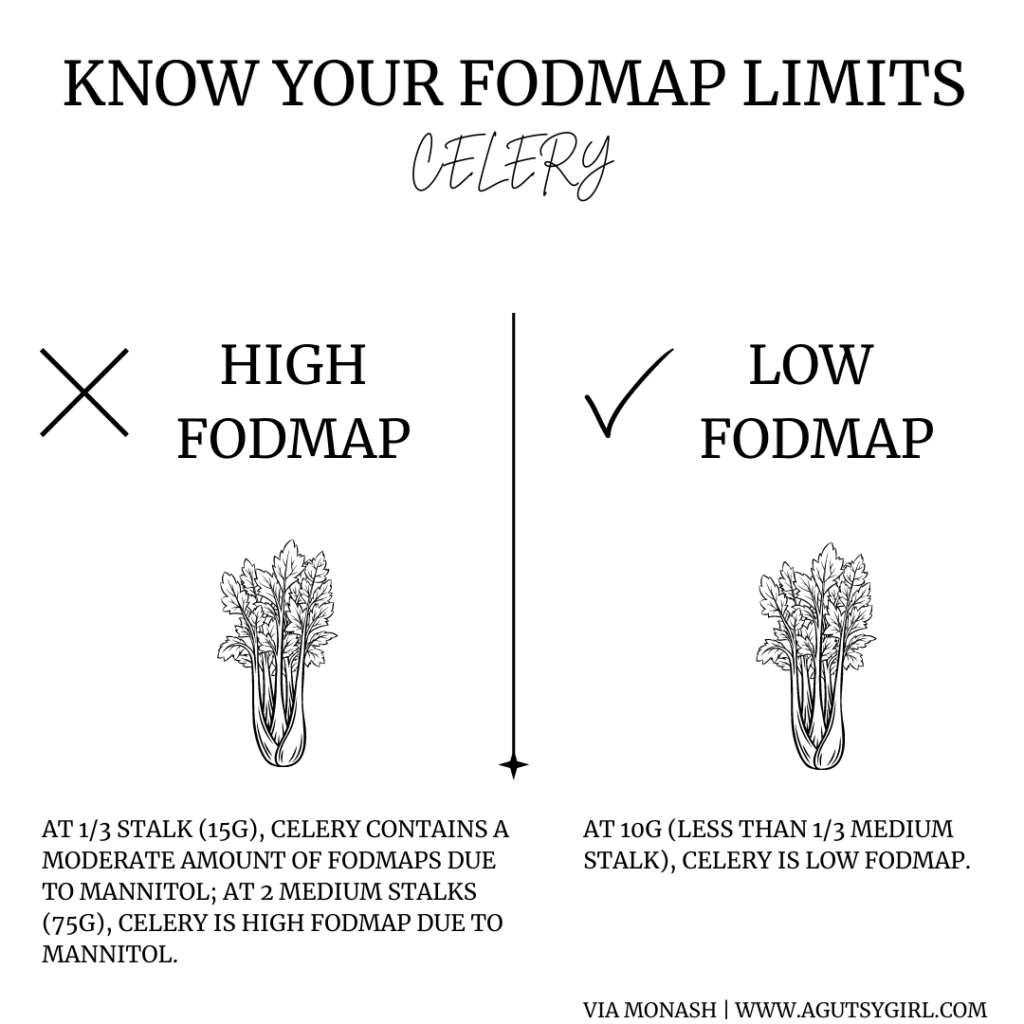
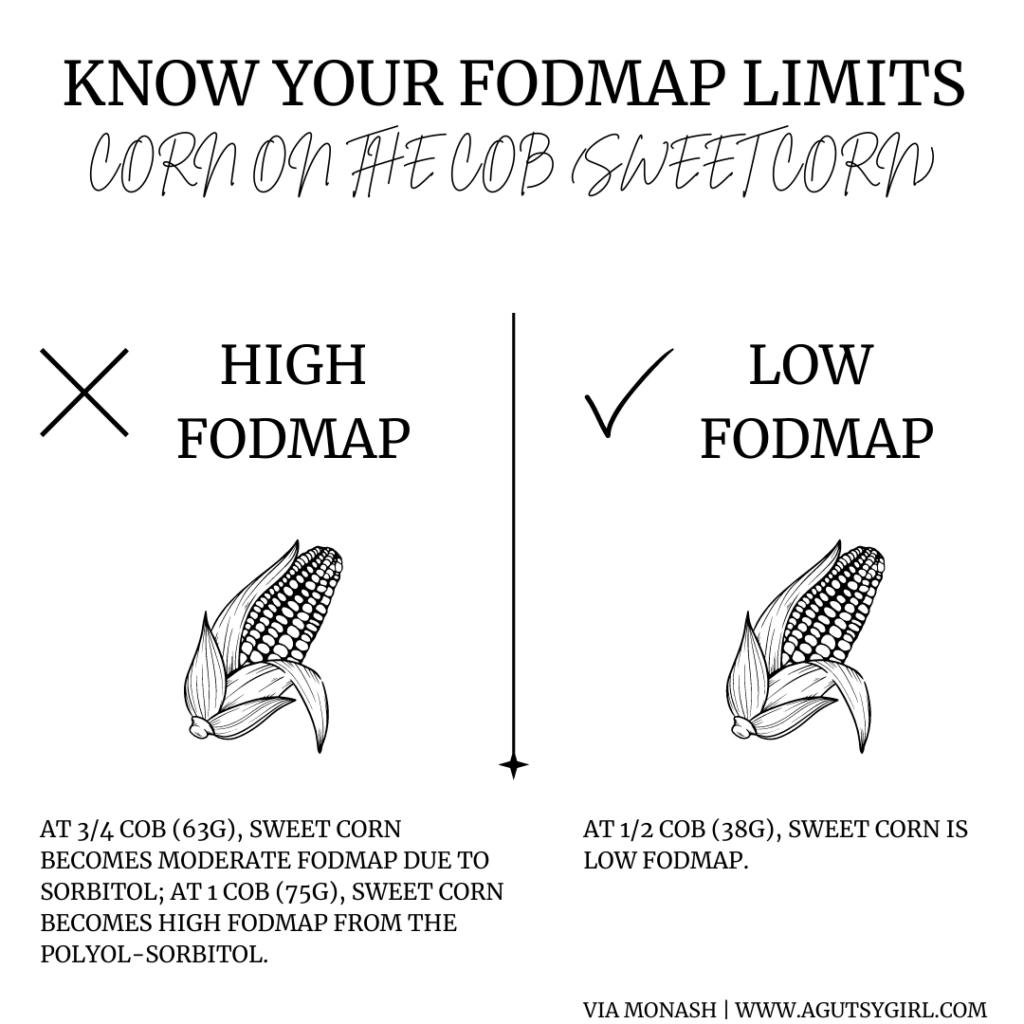
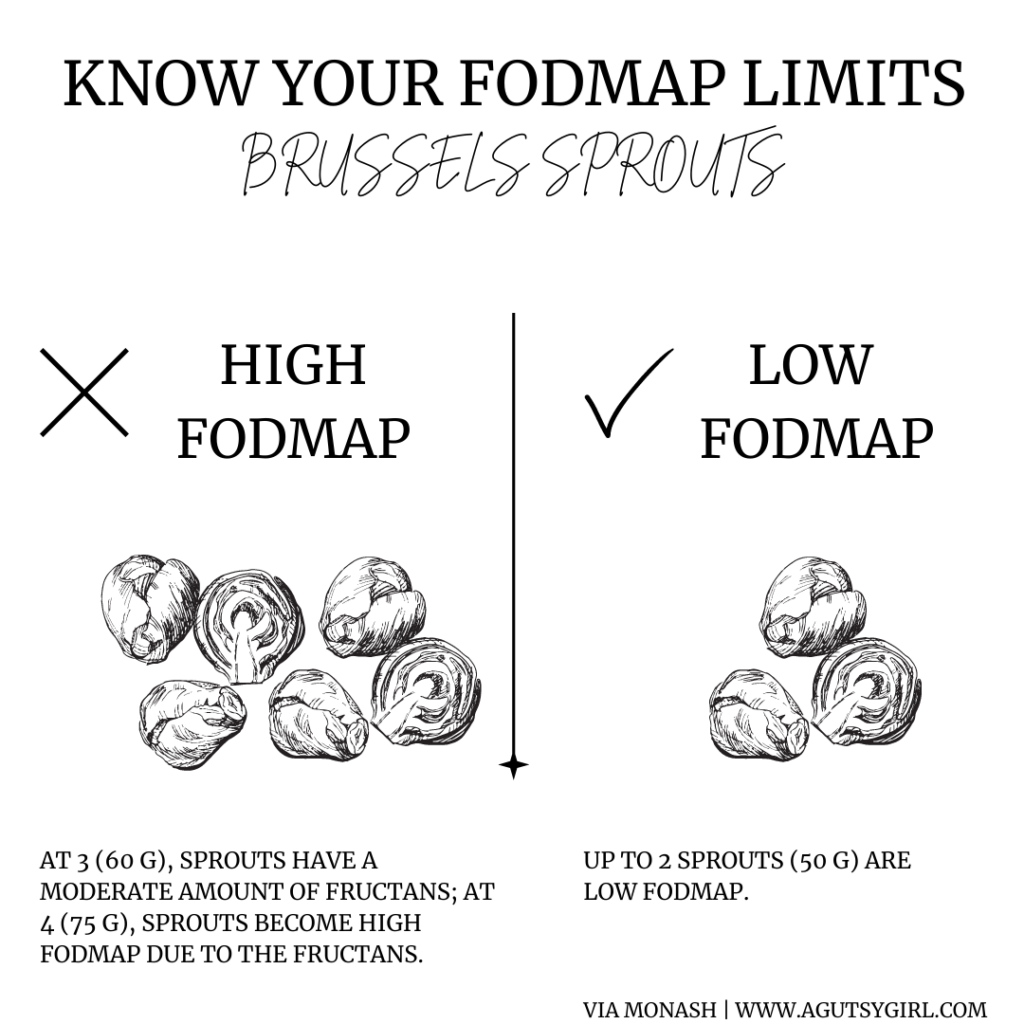
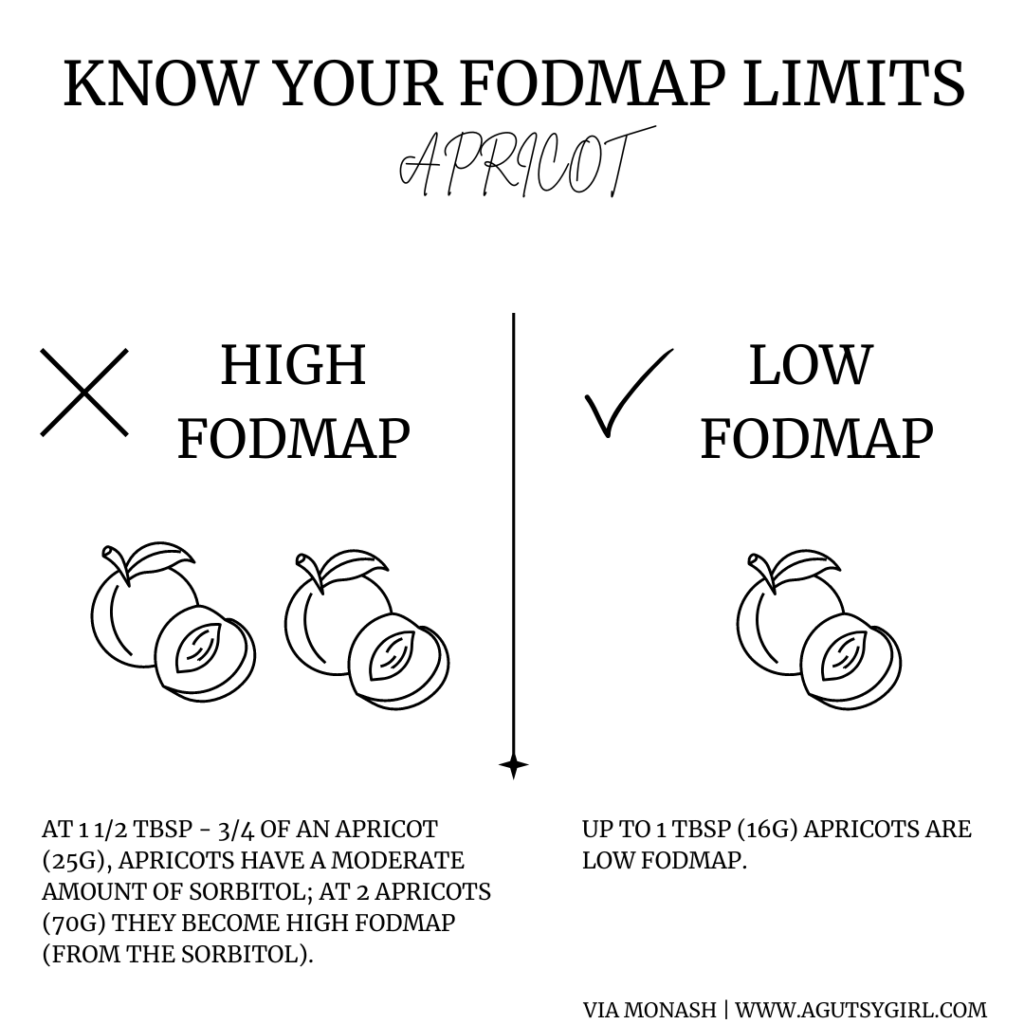
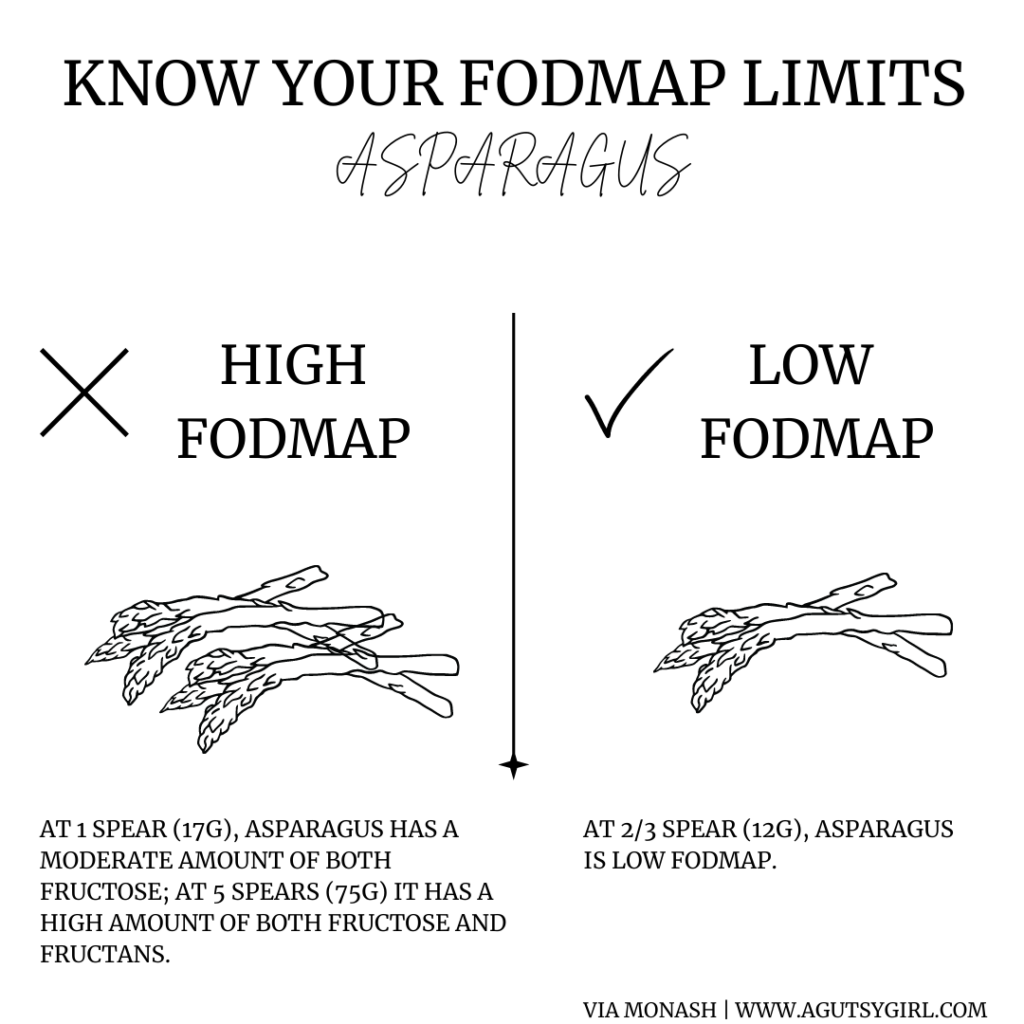
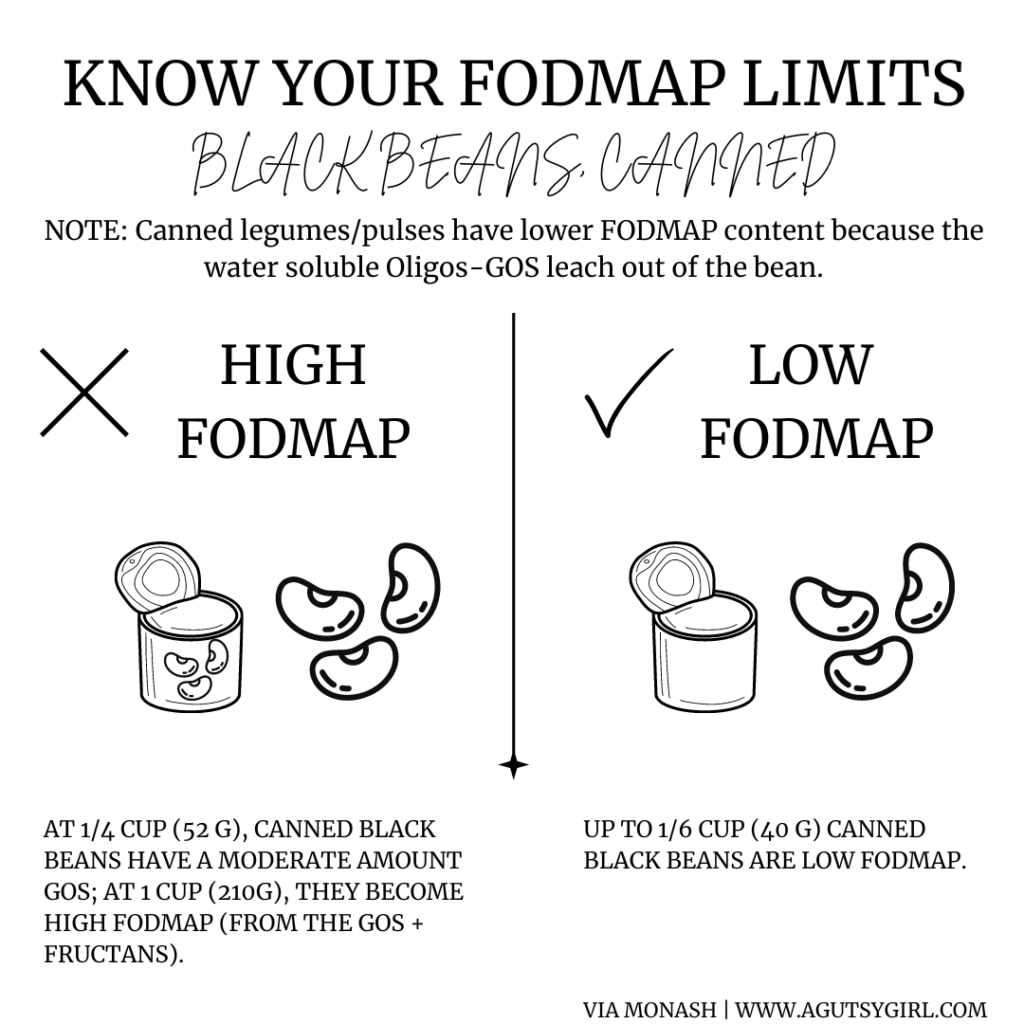
In other words, the FODMAP diet you create does not have to be all or nothing. In fact, it shouldn’t be. At least not yet.
And then….
Step 5: Create Your Own FODMAP Diet Plan, Understand What’s Next
After you have kept with your own FODMAP diet version for the set amount of weeks (remember, 2- 4/6 weeks is the recommended time for this elimination phase), you’ll need to decide what happens next.
The way you decide this is by asking yourself…..
How is this working for me?
And remember, I have a whole post on that topic to revisit HERE.
You’re at a fork in the road at this point. After you ask the question and honestly answer it, then either:
- Scale back more to identify the triggers (IF you know for sure it’s diet related) or
- Add more things back in, slowly, to identify triggers and sensitivities.
A registered dietitian or other medical practitioner who has experience helping people make dietary changes with low FODMAP foods can help with meal planning and navigating for your digestive issues.
But because I am a realist and know that you might want to give this a shot on your own first, if you follow everything outlined in this article, you might be able to start pinpointing what is causing all those IBS symptoms.
To continue on this road, check out my post on How to Reintroduce Foods After an Elimination Diet.
(This is for when you’re ready for a reintroduction phase. Don’t do this until you know you’re ready! Patience is a virtue here, even when it seems hard.)
And that’s how you’re going to create your own diet following FODMAP “guidelines.”
Questions?!
If you liked this post, you might also enjoy:
- Printable FODMAP Food List (your getting started shopping list)
- Why Can’t I Digest Sweet Potatoes?
- Low FODMAP Recipes (Create Your Own Buddha Bowl)
Xox,
SKH
🤰 bloating be gone! weight loss through optimal gut health for women
💃ʜᴇᴀʟ ʏᴏᴜʀ ɢᴜᴛ. ʜᴇᴀʟ ʏᴏᴜʀ ʟɪfe.
🫶🏻 founder gutbyome.com



